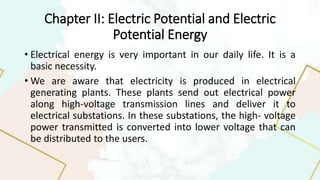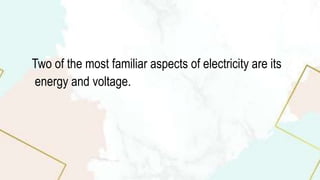This document provides an overview of 4 lessons on electricity and magnetism:
Lesson 1 introduces electric charge and static electricity, including how objects become charged through friction or conduction.
Lesson 2 explains Coulomb's Law, which describes the electric force between two point charges.
Lesson 3 defines electric fields as physical fields that exert forces on charged particles. It discusses electric field lines and how they indicate the direction and strength of electric fields.
Lesson 4 introduces electric potential and electric potential energy, including how more energy is required to move a charge through a stronger electric field or further in an electric field.






















































